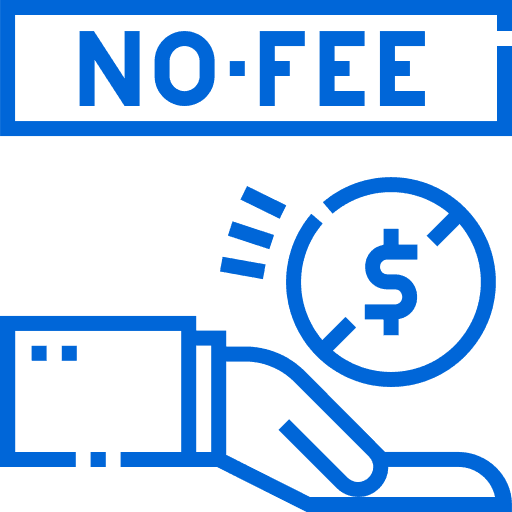- Maximum rate: 5.5% p.a.
- Standard variable rate: 0.05%
- Monthly fees: $0


The 5 highest savings interest rates we found are:
It's still too early to tell where and when interest rates are going to move soon, and it seems likely that the Reserve Bank will keep rates where they are for a while.
This is good news for savers, with high interest savings account rates now holding well above 5%.
The highest ongoing rate you can get on your savings is ME Bank's HomeME Savings Account, with a rate of 5.55%.
The highest overall rate you can get is Rabobank's High Interest Savings Account, which has a 4-month introductory rate of 5.75%.

When selecting your savings account, the interest rate is key. A higher rate means greater growth potential for your balance.

Check what conditions you need to meet to earn the bonus or introductory rate and make sure you can easily meet them.

Most banks don't charge a monthly fee for a savings account. If you're looking at a savings account that does charge a monthly account fee, know that this is not the norm and most accounts have no fees.

Some savings accounts allow you to withdraw money a few times each month, while some require you make no withdrawals at all. If you need regular access to your savings, pick a savings account that has no limits to withdrawals.

Some banks require you to link your savings account with an everyday account in the same bank to qualify for their interest rate or bonus rate. If you do need to get a bank account with the same bank, make sure the bank account doesn't charge high fees.

Some savings accounts will require you to deposit just $20 each month in order to earn bonus interest, while others will require much higher monthly deposits (some up to $2000 a month). Choose one that fits in with your ability to save.

The big 4 banks have been increasing their monthly savings rates along with the RBA cash rate increases. CommBank, Westpac, ANZ and NAB do not have the highest rates in the market, however, do offer easy to meet conditions. Check out the savings rates for the big 4 below.
| Total interest rate p.a. | |
|---|---|
| Commonwealth Bank NetBank Saver | 5.1% |
| NAB iSaver | 5% |
| Westpac eSaver | 4.65% |
| ANZ Progress Saver | 4.25% |
If you're after higher rates than what the big 4 banks are offering, then use our comparison table.
For a Bonus Saver account, the bonus interest is usually awarded when you're able to deposit a certain amount per month and make no withdrawals. It doesn't matter if you're a new customer or not, but there may be restrictions on the number of accounts you can have.
There's a difference between a headline rate and base rate. For an Introductory Bonus account, the bonus interest rate is only awarded for the first couple of months (normally up to 4) and you need to be a new customer.
You will also need to be within the balance your bonus rate applies to. In most cases, any balance beyond $250,000 usually earns the standard variable rate.

At the moment, most of my money is in a high interest savings account because I appreciate the simplicity. I also know I can take some money out relatively quickly if I need to, which is not the case with some other investments that have higher potential returns.— Amy Bradney-George, Personal finance expert
You can also earn an interest rate of up to 5.0% p.a. with a term deposit.

Find out how much you could earn with our savings calculator

Use our calculator to see earnings on your preferred term deposit length!
The type of savings account you choose will depend on the type of saver you are and what you're trying to achieve.
I'm a regular saver: If you can regularly save money each month a bonus saver account with an ongoing bonus rate might be best for you.
I'm just looking for the highest rate: Check out high interest savings accounts (and remember to check the account conditions)
I'm a business owner: There are dedicated business savings accounts for you.
I'm looking for a set-and-forget account with no conditions: Perhaps a term deposit could suit you better, as these don't have any ongoing conditions to meet and are locked until the term expires.




The MOVE Bank Growth Saver account is an online account that lets you earn a competitive rate. Learn more about this high interest savings account.
A review of the Australian Unity Freedom Saver account. Learn more about this high interest savings account.
Read Finder's review of the Bendigo Bank Reward Saver. Learn how you can earn the maximum bonus interest rate with this account.
The Great Southern Bank Goal Saver Account has an ongoing bonus rate on balances up to $50,000 for customers aged 18-24.
The Virgin Money Boost savings account (for 18-24 year olds) offers bonus interest each month you deposit money and meet the purchase requirements. Here's how the account works and how to apply.
Worthy causes of all types can benefit from the features of various types of savings accounts for charities.
Your savings goal can be closer with an incentive account that pays you bonus interest just for making a small deposit each month.
The People’s Choice Credit Union could provide you with the same savings opportunities as the big banks, with terms that you can live with.
The Bank of Melbourne Investment cash Account has no monthly fees. This account is a cash hub to help you manage your investments. Read our review and apply online.
As you approach retirement age, managing a fixed income can be a cinch with a pensioner high interest savings account for the flexibility you need.
ING Maximiser Account>
The conditions for obtaining a reasonable interest rate on this account seem unreasonable. Initially, interest is only paid on savings up to $100,000. Furthermore, they require consistent account growth each month to qualify for a decent interest rate. If you hold over $100,000 and wish to access the surplus funds, you forfeit the interest accrued for that month. The interest rate on the balance beyond $100,000 is merely 0.05%. Consequently, if you have, for example, an extra $5,000 above the $100,000 threshold, you earn a rate of 0.05%, rather than the more competitive rate offered by other banks on the same amount. I’m uncertain if ING’s terms comply with legal regulations by preventing customers from withdrawing amounts surpassing their established $100,000 limit. Please verify this for me.
Hi, you can withdraw money from your ING Savings Maximiser at any time.
What are the fees on these banking accounts? Ongoing fees, setup fees, monthly fees, not reaching transfer target fees, withdrawal of own money fees, or expensive atm fees?
Hi Chris,
If you click the “more info” button for each product, you can see a short summary of the benefits of that account, along with a link to a bigger review page that outlines all the fees and charges.
Hope this helps!
Hi Finder Team, why are ‘fees’ not on your sorting tool option? It seems to be the most important information that I would want to know regarding selecting my new bank account. Firstly, what monthly fees are there, if any? Secondly, are there fees for not depositing money regularly? Lastly, are there fees for withdrawing my own money at atms or in specific locations?
Hi Chris, we don’t include fees in our savings account comparison table because savings accounts charge no fees. You can’t withdraw money at ATMs from your savings account.
Most of the fees are associated with the linked transaction account, which is why we do include fees in our transaction account tables.
If I create a savings account with an introductory bonus rate paid for 3 months, in the middle of a calendar month and wish to withdraw and close the account to move to another bank ( i.e. rotating my money between higher introductory rates), will I be paid the daily interest owed? Most banks pay interest on either the last or first day of the month and I would like to know if I forfiet the interest, or can I leave the account open and get paid the interest owed at the end/start of the next month?
Many thanks for your time.
Hi Ned, this would depend on the account and what it states in its T&Cs. But usually interest is paid at the very end or very start of the month, so I think you’d be best to wait until you’re paid the interest then close the account.
Thanks,
Alison
Is there any media or government body willing to draw attention to saving account interest rate increases
Hi John,
Many savings accounts are increasing their interest rates at the moment, following the RBA increasing the official cash rate. This is good news for customers with money in the bank as it means you’ll be earning more interest on your money.
There has been quite a bit of media attention and stories on this topic in recent weeks. Finder tracks these rate changes and updates our product comparison tables every day with the new rates.
Thanks,
Alison